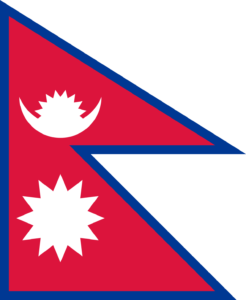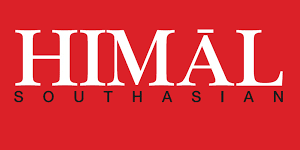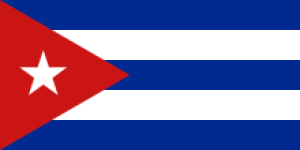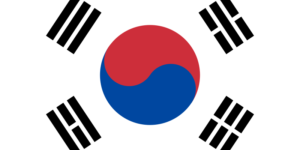Nepal Experiences Another Political Reversal As Public Takes A Backseat
No Comments yet 03-15-2024 ~ Nepal’s recent political changes, forming a coalition government led by the two largest communist parties, have implications for stability. Pushpa Kamal Dahal’s continued prime ministership and the inclusion of smaller parties signal shifting alliances.
03-15-2024 ~ Nepal’s recent political changes, forming a coalition government led by the two largest communist parties, have implications for stability. Pushpa Kamal Dahal’s continued prime ministership and the inclusion of smaller parties signal shifting alliances.
On March 4th, Nepal’s two largest communist parties united to establish a new coalition government, including smaller parties as partners. Pushpa Kamal Dahal, leader of the Maoist party, will continue as prime minister, a year after his initial election. Dahal has severed ties with the Nepali Congress Party, the largest parliamentary group, and has allied with the Communist Party of Nepal (Unified Marxist-Leninist), the second-largest party led by Khadga Prasad Sharma Oli. Following the shift in coalition dynamics, the prime minister is obligated to seek a vote of confidence in Parliament within 30 days, a process anticipated to result in his favor.
The new Left Alliance coalition will consist of four political parties: the Communist Party of Nepal (Maoist Centre), the Communist Party of Nepal-Unified Marxist Leninist (CPN-UML), the Rastriya Swatantra Party, and the Janata Samajbadi Party or People’s Socialist Party.
The increasing rift between the Maoist Centre and Nepali Congress parties regarding the claim to the chairmanship of the National Assembly—Nepal’s upper house of government—had posed a significant threat to the already delicate ruling coalition.
Following its Standing Committee meeting on February 28, the Maoist Centre opted to fight for the National Assembly chairmanship while Dahal had promised support to the Nepali Congress (NC) in the election for the Chair. Nepali Congress President Sher Bahadur Deuba intended for the party’s senior figure and recently elected legislator, Krishna Prasad Sitaula, to take on the position of National Assembly Chairman.
Dahal, known for leading a decade-long armed struggle against the then-monarchy starting in 1996, transitioned into mainstream politics following a 2006 peace deal facilitated by the United Nations. Although currently serving his third term as prime minister, he is yet to complete a full five-year term. Since abolishing its 240-year-old monarchy in 2008 and becoming a republic, Nepal has witnessed the formation of 13 governments.
The Electoral System in Nepal and the State of the Parties
The Federal Parliament of Nepal is structured into two houses: the House of Representatives and the National Assembly. The House of Representatives is composed of 275 members, with 165 elected through a first-past-the-post system, representing specific constituencies, and the remaining 110 chosen via proportional representation. On the other hand, the National Assembly comprises 59 members. In this house, each of the seven provinces elects eight members through an electoral college, and the President additionally appoints three members based on government recommendations.
The Nepali Congress (NC), a center-left social democrat party, is the largest party in the House of Representatives, securing 89 seats. Close behind is the Left Wing Communist Party of Nepal (Unified Marxist–Leninist) (CPN-UML), led by KP Sharma Oli, with 79 seats. Dahal’s party, the Communist Party of Nepal (Maoist Centre), holds 30 seats. The Rastriya Swatantra Party has 21 seats, while the Janata Samajbadi Party has 12 seats. The newly formed coalition of these latter four parties boasts a combined strength of 142 seats.
Dahal holds the role of kingmaker due to the intricate coalition dynamics in Nepal. The Nepali Congress and the Communist Party of Nepal (Unified Marxist–Leninist) have a history of ups and downs in their relationship, preventing them from forming an alliance at present. Despite past collaborations, their governments collapsed due to disputes over various issues. This leaves them with no alternative but to consider Dahal’s party as a potential alliance partner. Dahal’s credibility is further bolstered by his past leadership in the struggle for democracy.
Economic Situation
The inflation rate in Nepal was at 7.26 percent in the financial year 2021-22. The industrial sector contributes about 14 percent to the Gross Domestic Product (GDP) and employs approximately 14 percent of the workforce. The informal sector encompasses small- or medium-scale industries, agriculture, and service sectors where workers are limited in number and face restricted opportunities for organization. This informal sector constitutes 62 percent of the total employed labor force.
A significant number of young individuals are seeking employment opportunities abroad. Between 2008 and 2022, more than 4.7 million new work permits were issued, with a considerable portion of the Nepalese workforce, approximately 1 million individuals, presently employed in India. Concurrently, the unemployment rate in Nepal has surged to 10.9 percent. This has led to a greater number of people looking to migrate to other nations for jobs.
Nepal’s per capita income stands at $1,337, placing it among the region’s lowest. This translates to an average daily income of $3.60 per person, reflecting the economic challenges faced by the population.
Surprisingly, despite the historical presence of various Left formations at the helm of the country, successive governments have consistently advocated for promoting and integrating private capital into Nepal’s economy. This intriguing paradox raises questions about the alignment between political ideology and economic policies.
Implication for Nepal Politics
The shifts and inconsistencies in Nepal’s political landscape haven’t resonated well with the Nepalese people. Longtime political analyst Ashesh Ghimire suggests that “such inconsistencies could potentially fuel the rise of right-wing forces in the long run.” If these political maneuvers are perceived as mere strategies to seize power by a select few, there is a risk of eventual alienation from the broader political landscape over time.
Numerous examples and indicators underscore the dissatisfaction among the people. The manifestation of discontent is apparent through the protests held in November last year, which called for the restoration of the monarchy in the country. The rise of Rastriya Swatantra Party further emphasizes this trend, as the party advocates for a shift back to a unitary system, diverging from Nepal’s constitutionally established federal democratic republic.
Ghimire asserts that “right-wing and imperialist forces, along with their representatives, are capitalizing on… discontent to strengthen political entities and leaders aligned with their interests.”
During the general elections of 2022, the RSP emerged as the fourth-largest party in the House of Representatives. It achieved victory in seven constituencies: four in Kathmandu, one in Lalitpur, and two in Chitwan. Securing a 10.70 percent vote, the RSP attained recognition as one of the seven national parties in the Federal Parliament.
Moreover, Ghimire observes that the Left in Nepal has deviated from its political stance. He further notes that “a select few individuals transforming into a privileged ‘creamy layer’ persist in exerting influence on the government, reaping substantial benefits from the prevailing circumstances. The government should strive to curtail capitalist exploitations and focus on serving the interests of the working people.”
In Nepal, the socialist project faces challenges in promoting productive forces and ensuring fair distribution. The main obstacle is the dominance of finance capital, which not only fails to contribute to productive activities but hinders them. This is amplified by the ties between national finance capital and global finance capital, posing unique hurdles for a smaller state like Nepal.
Situated between the growing economies of India and China, Nepal is subject to their varying interests. Both India and China seek to establish favorable relations with Nepal and maintain influence on its politics. However, the recent entry of the United States onto the scene has added a new dynamic. China, in particular, appears increasingly concerned about the expanding influence and presence of the U.S. in Nepal through activities and investments like the Millennium Challenge Corporation. Should the United States gain a significant upper hand in Nepal, it would pose a formidable challenge to the socialist project within the country.
The 2022 election manifesto of the Communist Party of Nepal (Maoist Centre) outlined key foreign policy priorities. It advocated for the country’s liberation from foreign military activities to establish a zone of peace. It firmly opposed involvement in any bilateral or multilateral military alliances. Additionally, it called for a review and potential scrapping of treaties such as the Peace and Friendship Treaty of 1950, the Tripartite Agreement of 1947, transboundary water agreements, and trade- and transit-related treaties.
But Dahal’s track record in dealing with immediate neighbors as well as major powers has been checkered, marked by a tendency to make promises easily but struggle to fulfill them. However, in his favor this time, he heads a government comprising parties sharing similar political ideologies.
As Nepal navigates these dynamics, Dahal’s leadership and the government’s response to economic and public concerns will shape the nation’s political trajectory.
By Pranjal Pandey
Author Bio: This article was produced by Globetrotter.
Pranjal Pandey, a journalist and editor located in Delhi, has edited seven books covering a range of issues available at LeftWord. You can explore his journalistic contributions on NewsClick.in.
Source: Globetrotter
You May Also Like
Comments
Leave a Reply







